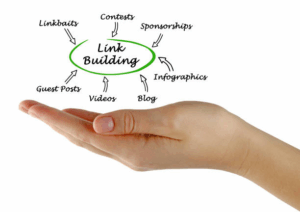When it comes to building email lists, we feel like (some) companies are missing the mark. There are so many missed opportunities and misconceptions that can stand in the way of results.
To be clear, there are a lot of results to be had. This list of email marketing benefits from Business2Community spells out the most compelling reasons, including building brand awareness and generating more website traffic and sales.
It should be noted that none of those results are reachable without building a solid email list and producing relevant emails. The basis of every solid e-mail list is a list of recipients that want to receive communications from the business and emails with information they want to receive. Here’s how to get started on the first part of the process: building an e-mail list that gets results.
How to Build a Solid Email List
Don’t buy or rent e-mail lists.
The first, and biggest, part of gathering emails for marketing purposes is a stern “don’t.” As tempting as it may be, don’t buy or rent email lists. This unfortunately all-to-common practice can lead to wasted efforts and incredibly low results.
Put simply, if the people behind those e-mail lists don’t want to receive e-mails from a business, they’re not going to open the e-mail. This leads to a higher bounce rate and lower open and click-through rate, which can get businesses tagged as spammers without generating any (or few) sales.
Ask in sales meeting, tradeshows, and at the register.
The biggest missed opportunities for e-mail addresses come during daily interactions: in sales meetings, trade show interactions, and during in-person checkouts. This is a prime reason why every employee should be included in the effort to request e-mails (and ask for online reviews).
The exact method of asking is different for every business, which is why identifying opportunities involves an overall evaluation of all business practices. For businesses that ship products, marketing materials asking for e-mails can be included. If the sales process is online, a follow-up email can be sent thanking them for their business and asking if they would like to communicate further.
If a sales team is involved, there are several chances for these asks: during follow-up visits and interactions. Even technicians can collect e-mails and ask for reviews when the service is delivered. Both of these efforts can be useful for marketing purposes and improving a business’ local SEO. (For more information on the pros, contact local SEO experts.)
Create a social media ad.
Social media is an essential part of every business marketing effort and another way to boost a business email list. Effective social media ads are run on social media sites that reach the target audience (more on how to choose the right social media site here) and are targeted (via interests, demographics, or location) to ensure that a relevant audience is being reached. These ads may include incentives for compliance, such as a discount for e-mail list sign-up or an offer that the viewers can’t refuse.
Make e-mail sign-up part of the check-out process.
For e-commerce websites, an e-mail sign-up is a logical part of the buying process. The exact process of the e-mail sign-up should be easy and reasonable. Long forms and indirect links can weaken the resolve of even the most dedicated user.
Directing users to the e-mail process should be just as clear-cut. The ask can be made via a box included in the purchasing process or via a follow-up e-mail after the purchase. If repeat sales or retaining customers is a campaign goal, the follow-up can include an incentive for another purchase (i.e. percentage off on next purchase, discount on certain item, etc.)
Make followers aware of the perks of e-mails in a social media post.
Social media is a great way to spread the word about the benefits of joining an e-mail list. This is a business’ chance to (occasionally) let users know what they’re missing out on (exclusive e-mail offers) and direct them to the e-mail sign-up page. Social media posts about the e-mail list should be included in a regular social media plan with relevant topics.
Add the request to promotional materials.
The request for e-mails can extend beyond social media and in-person asks. The ask for e-mails should be included on promotional materials strategically produced for the targeted audience. As with online, the request should make the process easy for the recipient. QR codes (which are easy to scan with a mobile device) and URLs to the sign-up page are both easy and effective. The preferred method can be included on brochures, post cards, materials included in shipments, and trade show packets.
Add a pop-up with the ask to the business website.
Website pop-ups can be unpopular and incredibly effective for e-mail sign-ups. The pop-ups should utilize the best online marketing practices and give viewers a reason to want to click. These incentives could include a discount for e-mail sign-up or valuable insider tips that viewers only receive for taking action.
Include the request on the business blog.
Content marketing is a great way to bolster a website’s search engine rankings, offer customers valuable and relevant tips, ask for engagement on social media, and request e-mail sign-ups. The request for e-mail sign-up can be included as a call-to-action in the content, in blog pop-ups, or in clickable images on the blog. These clickable images can include, “for more information, subscribe…” or “to get more great tips, sign-up…”
Tips for Effective Email Sign-Ups
- Make it easy for users to sign-up (no long forms!)
- Give users an incentive to sign-up.
- Make the sign-up process secure.
- Include the ask for e-mail sign-up in business standard operating procedures.
- Ask employees to spread the word about the business email list on social media, in e-mails, and in e-mail signatures.
Ideas for Engaging E-mail Content
- Blog posts relevant to the season or recipient (from the company or from other industry leaders)
- Sales/discounts/offers (including exclusive offers that make the recipient feel like part of a loyal club)
- Useful tips
- Communications from business leaders
- Requests for donations
- Daily points of interest
- Photos and videos relevant to the audience



